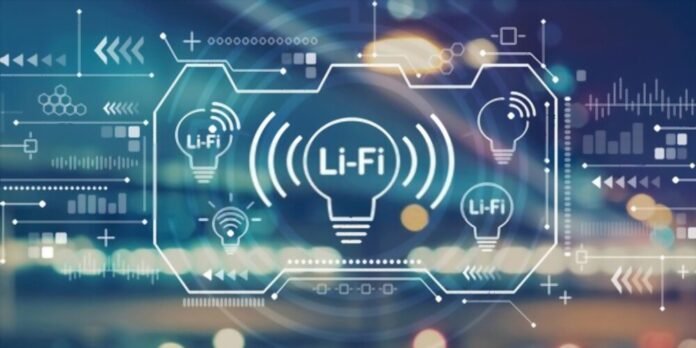A descendant of Wi-Fi (“Wireless Fidelity”) which has become essential in both homes and offices, Li-Fi (“Light Fidelity”) could well end up taking a monopoly on the market within a few years.
This innovative technology works like Wi-Fi, except for one detail: Wi-Fi transmits radio waves, while Li-Fi works with a light beam that is imperceptible to the human eye. In other words, it is the optics of the electromagnetic spectrum which is exploited by Li-Fi, while Wi-Fi exploits the radio part of the electromagnetic spectrum.
Contrary to what one might think, Li-Fi technology is not new, but… from 1880! Indeed, Alexander Graham Bell, inventor of the telephone, carried out the first demonstration of optical communication: the sound of his voice transmitted over several hundred meters using solar light. This wireless communication system was therefore developed well before the arrival of radio communications.
But then, what else does Li-Fi provide that Wi-Fi doesn't already provide?

Well first of all: the frequency band covered by the spectrum of light is not regulated. Which means that it is not subject to a fee, like Wi-Fi. You should also know that its mode of broadcast does not interfere with radio waves. Wi-Fi, 3G, 4G signals are therefore maintained without additional disturbances, apart from those they already have.
This article might interest you: How to improve WiFi reception on my laptop?
Li-Fi and security
Its mode of diffusion, the light beam, cannot pass through obstacles such as partitions, unlike radio waves emitted by Wi-Fi. As a result, only devices present in a room equipped with an access point can get Li-Fi connection.
Thus, in terms of cybersecurity and in order to fight against network hacking, Lifi solutions are what is best, far surpassing Wi-Fi. So much so that some governments (and embassies) are doing so. are placed, in order to ensure that the confidentiality necessary for government actions remains intact and is not subject to network hacking.
Li-Fi and performance

Secondly, Li-Fi is much more efficient than its predecessor. Since they are not radio waves, the broadcast does not lose its power. The connectivity is therefore stable and does not suffer from latency in the transmitted rate.
Coupled with the installation of photonic antennas (the number of which depends on the surface area of the room to be covered), connectivity is then deployed optimally. In a society where everything is moving ever faster, Li-Fi is becoming an increasingly popular solution, particularly by professionals.
Finally, if it was necessary to quantify the current performance of Li-Fi throughput, it is then relevant to mention that this has averaged 40 Mb/s since 2018. In 2015, the throughput was only than 10 Mb/s: we therefore see a clear evolution in the space of three years.
Li-Fi and health

Over the years, researchers have been able to realize that the electromagnetic waves generated by Wi-Fi had a negative impact on the human brain. The current era means that
we find ourselves constantly confronted with these waves, even via our cell phones with 4G and 5G.
Li-Fi could therefore become the lasting solution to this issue, in order to reduce radio frequency wave pollution, which has become harmful due to the fact that it is constant and everywhere. The signal passes through the optics of the electromagnetic spectrum, so it is completely harmless to humans.
So you will have understood, Li-Fi is set to replace Wi-Fi within a few years, this new technology clearly marking positive points in the face of many problems that we have faced until now.




